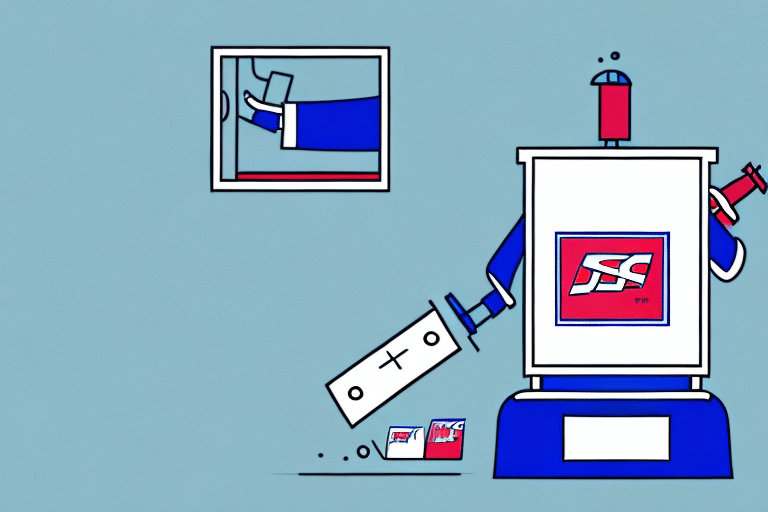Understanding USPS Insurance Rates
When it comes to shipping, the United States Postal Service (USPS) is a popular choice for many individuals and businesses. However, it's essential to consider the risks associated with shipping valuable items without adequate insurance. USPS insurance provides coverage for lost, damaged, or stolen packages, offering peace of mind and financial protection. In this article, we'll explore everything you need to know about USPS insurance rates, including updates and insights from 2024.
Why You Need USPS Insurance
Accidents can happen during the shipping process, even with the most careful handling. Whether you're an individual sending a valuable gift or a business shipping high-value products, USPS insurance is crucial. It safeguards against potential losses from damaged, lost, or stolen packages, ensuring that you don't bear the financial burden alone.
Moreover, offering insurance can enhance your business's credibility. Customers are more likely to trust and return to businesses that prioritize the safety of their orders, leading to increased customer satisfaction and repeat business.
According to the USPS 2023 Annual Report, there was a 5% increase in claims filed for lost and damaged packages compared to the previous year, highlighting the importance of having insurance coverage.
What USPS Insurance Covers
USPS insurance covers the declared value of the item being shipped, typically up to $5,000. This coverage includes protection against:
- Loss of the package during transit
- Damage to the contents of the package
- Theft of the package
However, it's important to note that certain items are excluded from USPS insurance coverage, including:
- Perishable goods
- Live animals
- Cash and valuable metals
Additionally, cosmetic damage that does not affect the functionality of the item may not be covered. USPS insurance is primarily available for domestic shipments within the United States. For international shipping, consider additional insurance options or different carriers that offer comprehensive international coverage.
For more detailed information on exclusions, refer to the USPS Domestic Mail Manual.
USPS Insurance Pricing Structure
The cost of USPS insurance is directly related to the declared value of the item being shipped. Different USPS services have varying pricing structures:
- Priority Mail: Includes $100 of insurance automatically, with options to purchase additional coverage up to $5,000.
- First-Class Mail: Insurance must be purchased separately and is available up to $5,000.
- Registered Mail: Offers up to $50,000 in insurance coverage, ideal for high-value items.
It's important to remember that USPS insurance covers only the value of the item, not additional costs such as shipping fees or taxes. For example, insuring a $300 item through Priority Mail may cost an additional $3.15 for coverage up to $400.
For the most accurate and up-to-date pricing, visit the USPS Insurance Page.
How to Calculate USPS Insurance Rates
Calculating USPS insurance rates is straightforward. The cost is based on the declared value of the item being shipped. Here's a simple way to determine the insurance cost:
- Determine the value of the item you are shipping.
- Choose the USPS service that best fits your needs (e.g., Priority Mail, First-Class Mail).
- Select the insurance coverage amount based on the item's value.
For instance, shipping a $300 item via Priority Mail allows you to purchase additional insurance coverage up to $400 for a nominal fee. Always ensure that the declared value accurately reflects the item's worth to avoid discrepancies during the claims process.
For more detailed calculations, refer to the USPS Insurance Calculator.
Factors That Affect USPS Insurance Rates
While the declared value is the primary factor in determining USPS insurance rates, several other elements can influence the cost:
- Type of Mail: Different USPS services have varying base rates and coverage options.
- Destination: Domestic shipping rates differ from international rates.
- Package Weight: Heavier packages may incur higher insurance costs.
- Additional Services: Features like signature confirmation or special handling can affect the overall insurance rate.
Understanding these factors can help you choose the most cost-effective insurance option for your shipping needs.
Understanding USPS Priority Mail Insurance vs First-Class Mail Insurance
USPS offers different insurance options based on the mailing service selected. Here's a comparison between Priority Mail Insurance and First-Class Mail Insurance:
| Feature | Priority Mail | First-Class Mail |
|---|---|---|
| Included Insurance | $100 included | None included; must be purchased separately |
| Maximum Coverage | $5,000 | $5,000 |
| Delivery Time | 1-3 business days | 1-5 business days |
| Package Weight Limit | Up to 70 pounds | Up to 13 ounces |
For high-value items, Priority Mail offers faster delivery and included insurance, making it a preferable choice. However, for lighter packages, First-Class Mail provides a more economical option, albeit without included insurance.
For more details, visit the USPS Shipping Services page.
How to File a Claim with USPS Insurance
If your insured package is lost, damaged, or stolen, you can file a claim to receive compensation. Here's how to navigate the claims process:
- Visit the USPS Claims Page.
- Gather necessary documentation, including the tracking number, proof of value (receipts or invoices), and photos of the damaged item.
- Submit the claim online or via mail within the specified timeframe (usually within 60 days for domestic claims).
- Respond promptly to any additional information requests from USPS.
Once your claim is submitted, USPS will investigate and notify you of the outcome. Approved claims will result in compensation up to the insured value. If denied, you have the option to appeal the decision.
Ensure all information is accurate and complete to facilitate a smooth claims process.
Common Mistakes to Avoid When Filing a Claim for USPS Insurance
Filing a claim with USPS insurance can be straightforward if you avoid common pitfalls:
- Incomplete Documentation: Always provide all required documents, including proof of value and evidence of damage.
- Late Filing: Submit your claim within the USPS-specified timeframe to avoid denial.
- Poor Packaging: Improperly packaged items may lead to damaged goods, complicating the claims process.
- Incorrect Information: Ensure all details, such as tracking numbers and addresses, are accurate to prevent delays.
By adhering to these guidelines, you can increase the likelihood of a successful claim.
Tips for Maximizing Your USPS Insurance Coverage
To make the most of your USPS insurance, consider the following tips:
- Accurate Valuation: Declare the true value of your items to ensure adequate coverage.
- Additional Coverage: For high-value or fragile items, consider purchasing additional insurance beyond the included amount.
- Secure Packaging: Use sturdy packaging materials and proper cushioning to protect your items during transit.
- Tracking and Confirmation: Utilize tracking services and signature confirmation for added security.
Additionally, maintaining detailed records, including photos and receipts, can expedite the claims process if needed.
Alternatives to USPS Insurance for Shipping Needs
While USPS insurance is a reliable option, other shipping carriers offer competitive insurance solutions:
- UPS: Provides various insurance options with coverage up to $50,000 for high-value shipments.
- FedEx: Offers comprehensive insurance packages tailored to different shipping needs.
- Third-Party Providers: Companies like InsureShip specialize in shipping insurance, offering flexible plans and competitive rates.
Comparing these alternatives can help you find the most suitable and cost-effective insurance coverage for your specific shipping requirements.
Understanding the Fine Print of Your USPS Insurance Policy
Before finalizing your shipment, it's crucial to thoroughly review the terms and conditions of your USPS insurance policy. Key aspects to consider include:
- Coverage Limits: Understand the maximum amount covered for different types of items.
- Exclusions: Be aware of items or circumstances that are not covered under the policy.
- Claims Process: Familiarize yourself with the steps required to file a claim successfully.
- Timeframes: Note the deadlines for submitting claims and any other time-sensitive requirements.
By understanding these details, you can ensure that you're fully protected and prepared in the event of an incident.
Comparison of USPS Insurance Rates with Other Shipping Carriers
When selecting an insurance provider, it's beneficial to compare USPS insurance rates with those of other shipping carriers:
| Carrier | Maximum Insurance | Cost Efficiency | Additional Features |
|---|---|---|---|
| USPS | $5,000 | Competitive for standard shipments | Priority Mail includes $100 insurance, Registered Mail offers up to $50,000 |
| UPS | $50,000 | Higher coverage for valuable items | Comprehensive tracking and handling options |
| FedEx | $100,000 | Best for high-value shipments | Flexible insurance plans and expedited claims |
Choosing the right carrier depends on your specific needs, including the value of the items, speed of delivery, and additional services required. Conducting a thorough comparison ensures that you receive the best protection at a competitive rate.
Overall, understanding USPS insurance rates and how they compare to other carriers is essential for safeguarding your shipments effectively. By following the tips and guidelines outlined in this article, you can make informed decisions that protect your goods and support your shipping operations.
Conclusion
Whether you're an individual sending a precious gift or a business shipping valuable products, understanding USPS insurance rates is crucial. By evaluating the coverage options, pricing structures, and comparing them with other carriers, you can ensure that your shipments are adequately protected. Always prioritize accurate valuation, secure packaging, and thorough documentation to maximize the benefits of your insurance coverage.
Stay informed and proactive to minimize risks and enhance the reliability of your shipping process.




















